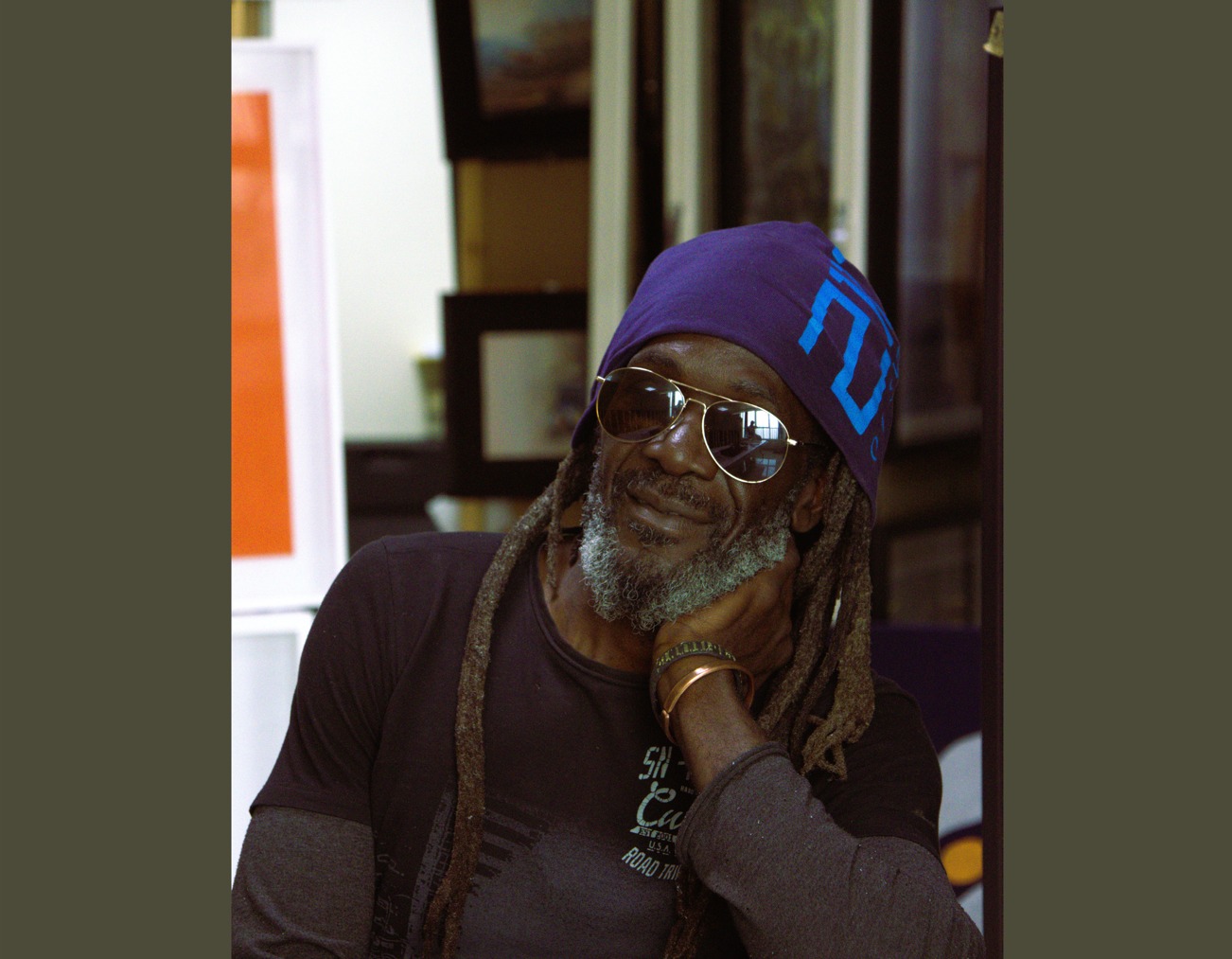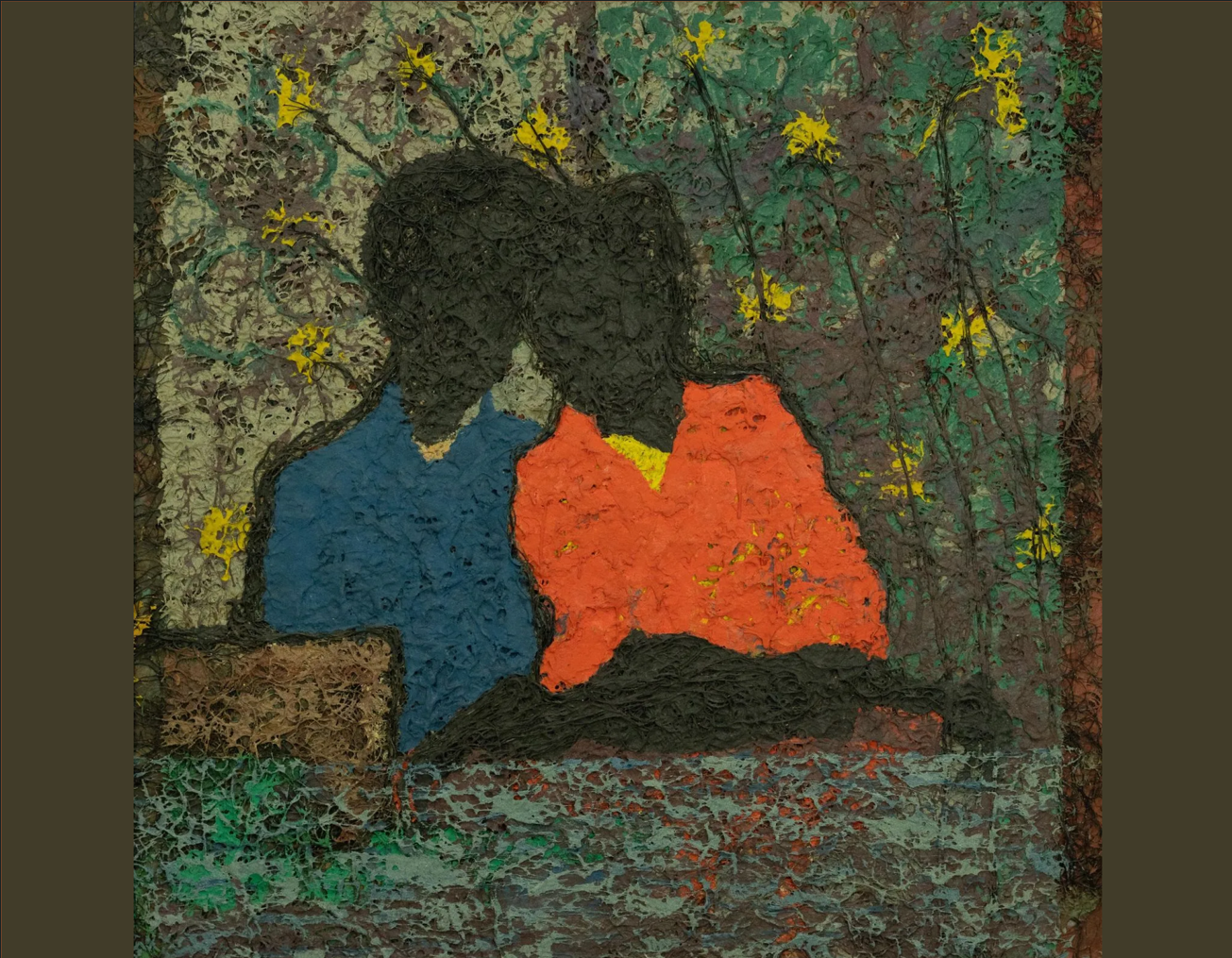Jabu’s Odyssey: Tracing Visual Echoes Through Familiar Narratives
.png)
Jabu’s Odyssey: Tracing Visual Echoes Through Familiar Narratives
By Oratile Mosimanekgosi

I had the pleasure of attending the Latitudes art fair again this year and met parts of the gardens I did not see in the previous year. If you were in a rush, you would have missed its many exhibits in the busyness of seeing familiar faces, bold interesting artworks and the many orange Aperol Spritz’s.
Early on, I encountered three artworks by Bambo Sibiya, presented by Everard Read as a precursor to the official exhibition, After Precarity, which launched the following weekend.
Sibiya’s work is very intentional about portraying black women in a way that dignifies and honours them. It reminded me of old family photo albums of graduations, weddings and birthday celebrations, where our parents and their siblings were often caught candidly on camera. The exhibition title suggests a shift from a precarious situation marked by uncertainty, instability or danger to a more favourable condition.
There is something quite archival about the sense of familiarity that Sibiya communicates, yet the cultural motifs make visual reference to contemporary blackness and culture. After Precarity boldly but pleasantly, rejects the historical trope of the destitute black woman. The garments worn by all four women depicted in the three artworks refer to Elizabethan upper-class fashion. Their garments were characterised by imported materials like silk, lace, taffeta, cotton and expensive jewels. The more elaborate they appeared, the greater the likelihood of being conspicuous to others. Sibiya translated the sheer grandiosity of these women's clothing and accessories. The shweshwe textiles present in the artwork seem common as well, so much so that I daresay that almost every black woman owns a piece of fashion such as a dress, skirt, earrings or even an apron, made for a special occasion like a wedding, lobola negotiations or a ceremonial tombstone unveiling.
There are popular denim aprons often worn by the family’s matriarch, lined with shweshwe fabric. She is the aunt who holds the key to the world or as we call it, ko roomung kontle (the outside backroom), where the scones are kept safe and the 20L bucket of grilled chicken is monitored by her. She doesn’t do this because she is greedy, stingy or selfish. This is how she manages distribution, to maintain order and access. These women are dignified cornerstones of our families, and the women depicted in Sibiya’s paintings successfully evoke this universal black experience.

I was in awe of the paintings and needed to take in the works before approaching the curators to speak about them and find out if Sibiya gave these women names. I took brief intermissions between myself and my fellow writers before reconvening the walkabout. This quickly became an everyday ritual for me during my three days at the Latitudes Art Fair. The need to engage, disengage, and engage again – taking some time to notice my breath and how my body feels.
I particularly enjoyed the woman backdropped against a pattern of what I assumed to be Blue Jays. Her name is Jabu. I found out these women are known friends and family members of Sibiya. They are real people with real stories and expressions on their faces.
According to the online animal encyclopedia, Blue Jays hold many cultural and spiritual interpretations. My favourite one is the folklore that blue jays are significant birds that symbolise honesty, loyalty and bravery. Native Americans believe that they created the earth when it was just water, by distributing dirt and acorns. Therefore spreading knowledge. This narrative is consistent with what Sibiya intends to communicate through the demeanour of these women. They are loyal to their families, and their culture. That is relayed through the traditional motifs, the hair, the bright colours and the regality in the accessories that adorn their bodies. Her canvas boasts beyond a metre, making her monumental. Jabu demands the attention and engagement of the observer. I am interested in her magnetic gaze as well. Sibiya does not exaggerate their joy for the viewer. Much like those family photos where our grandmothers smiled with their eyes. They’re being themselves. Bold but reserved.
Jabu evokes echoes of artist Mary Sibande’s ‘Sophie’ and a dear friend's recurring figure in her paintings, ‘uMazikode’, by Nombuso Dowelani. They honour their grandmothers with grace and luxury. I'm drawn to Sibande's Sophie, grandiose in royal blue, devoid of artificial joy. These women, including Sibiya’s Jabu, share a legacy of instability and resilience. They're not fictional characters on canvas; Jabu, Sophie, and uMazikode are real women whom we know, embodying the black feminine experience.

The woman depicted in the artwork titled ‘Jabu Shoulders’ does not engage directly with the viewer. Sibiya directs her gaze away from the observer, suggesting a sense of concentration or focus on something beyond the immediate scene of the canvas. Her posture, with both hands positioned in a manner that conveys strength and confidence, enhances her presence. Although the artwork only reveals the woman's upper body, her pose appears to draw inspiration from the contrapposto, a renowned Greek sculptural technique characterised by a subtle shift in weight that creates a sense of dynamism and naturalism.
The comparison between Jabu and the iconic sculpture of Michelangelo's ‘David’ lies in their shared attributes of gaze direction and arm and hand movements which alluded to underlying symbolism. During the Renaissance, such attributes were significant, often representing intellect and triumph. ‘David’, portrayed by Michelangelo, exudes strength and determination, reflecting his victorious outcome in battle. Similarly, Sibiya portrays single mothers as superheroes. Not in a cliche manner but rather superheroes because of their contribution to society. He celebrates their role as heads of households, raising responsible men and women who will contribute to their society once they go into the world alone. This departure from traditional depictions of women as passive or vulnerable figures to ones that exude resilience and empowerment revitalises the subject matter.
What sets Jabu apart is her unique embrace of other women, evoking feelings of honour, celebration, and opulence. Through Sibiya's artistic vision, Jabu becomes a symbol of visual arousal, capturing the viewer's attention and admiration.
There are similarities between her and a common African woman. She felt seen and understood. All three of these works are in complete agreement with each other.
This article was produced as part of the ARAK x Latitudes Critical Art Writing Workshop led by Ashraf Jamal over the course of the 2024 RMB Latitudes Art Fair.
Writer’s biography:
Oratile Mosimanekgosi, an emerging artist and writer, is thoughtfully engaged in exploring the experiences of women. Graduating with a BA in Visual Art from the University of Johannesburg in 2023 marked the beginning of her journey. That same year, she had the privilege of presenting a paper at the Johannesburg Institute of Advanced Study (JIAS) focused on Bloke Modisane's centenary. Currently, Oratile has a forthcoming essay scheduled for publication, wherein she reviews the exhibition "Overwhelmed" hosted at the UJ Art Gallery. Her collaborations with numerous galleries and artists over the years have significantly enriched her industry experience and knowledge base. Looking ahead, She aims to delve deeper into her critical writing pursuits. She plans to analyze and dissect the prevailing misconceptions surrounding intersectional feminism and preference as portrayed in mainstream social media. This endeavor reflects her commitment to advancing discourse and understanding within contemporary cultural spheres.
.svg)


.svg)
.svg)


.jpeg)